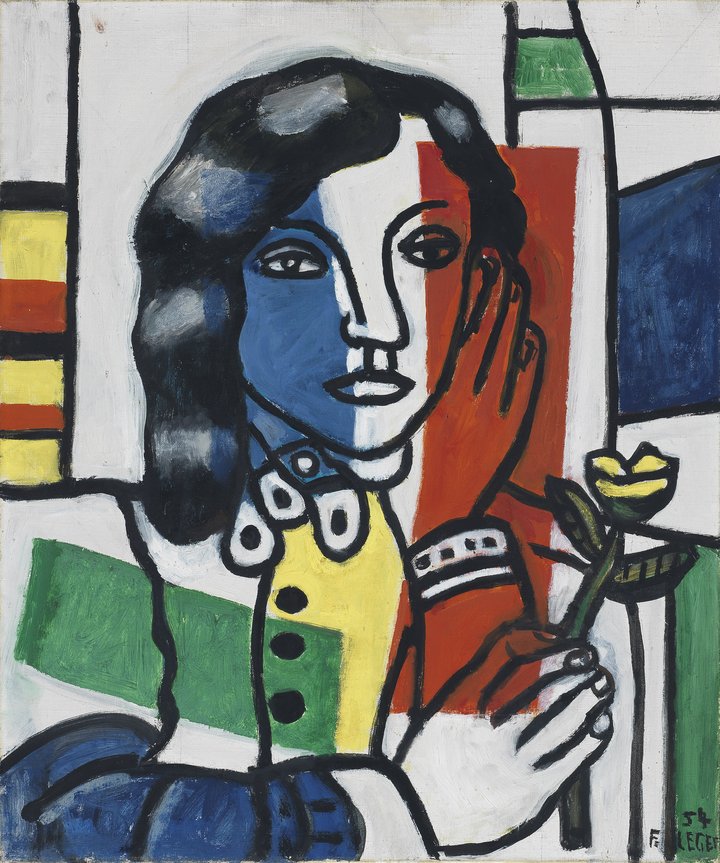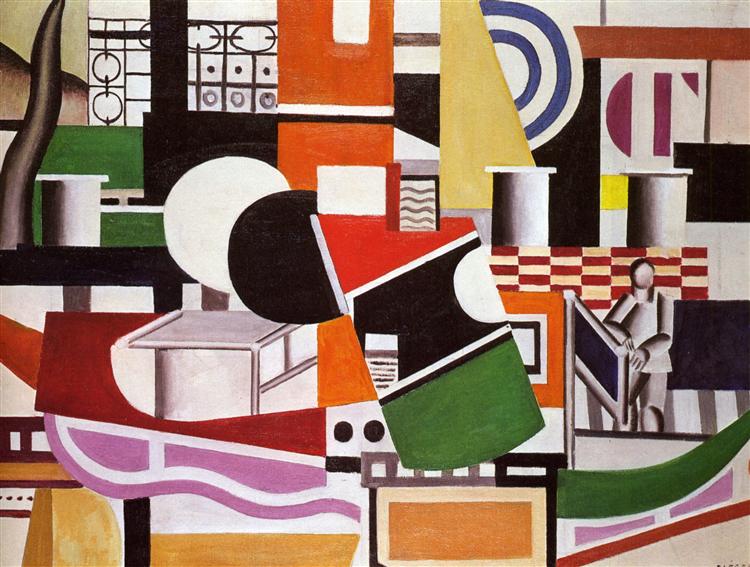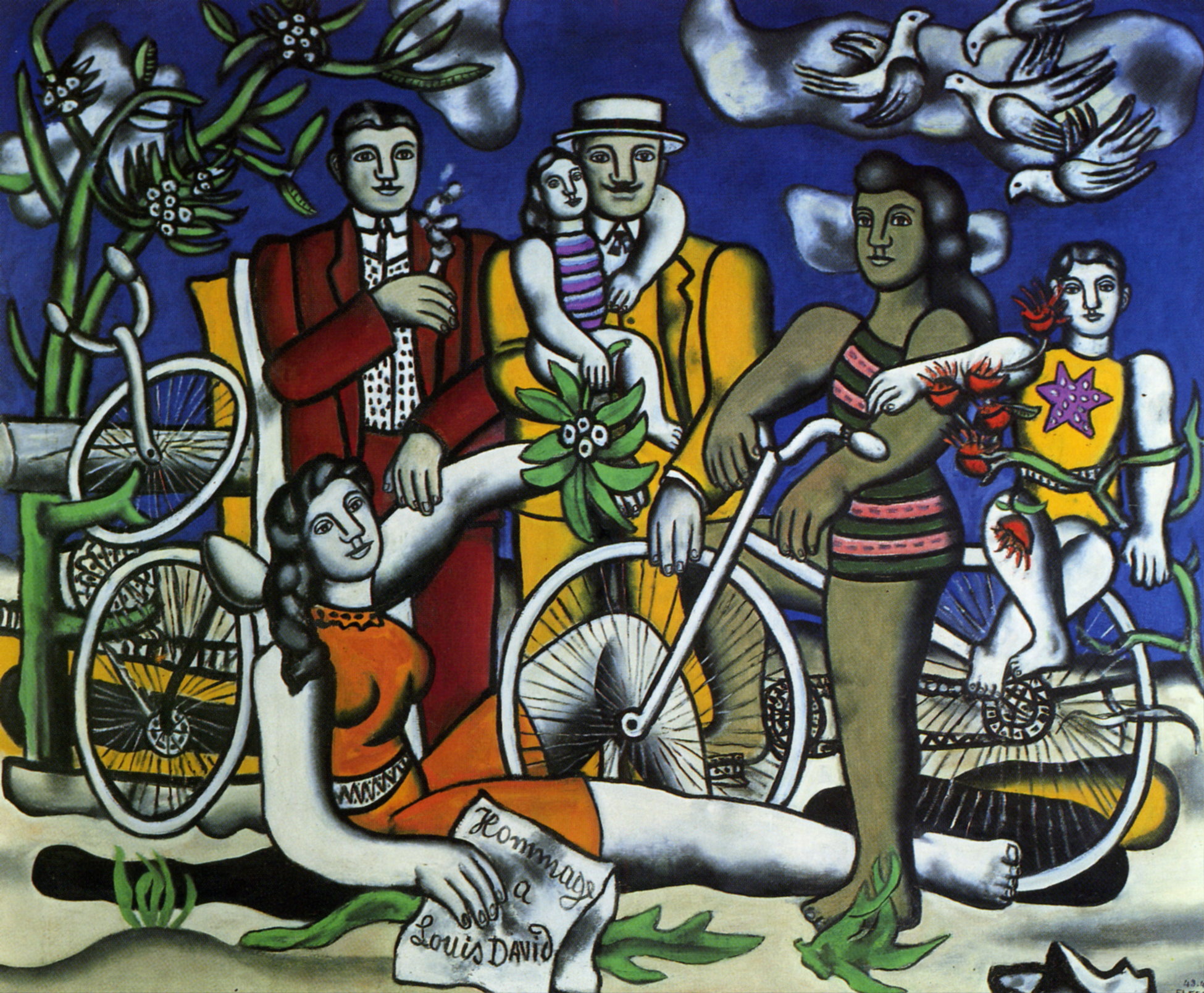3 NOVEMBER 2018 – 17 MARCH 2019
VAM - Institut Valencià d'Art Modern
2 May to 15 September 2019.
Tate Liverpool presents the first major UK exhibition in 30 years of renowned modern artist Fernand Léger (1881–1955). Fernand Léger: New Times, New Pleasures brings together more than 50 paintings from across Europe, including many never before seen in the UK.
Featuring abstract and figurative paintings, drawings, a large-scale mural, films, graphic design, books and textiles, the exhibition explores how Léger redefined the value of art to 20th century society. Creating works in a diverse range of media, Léger was a politically-engaged artist, with an unwavering belief in the social function of art for everyone. Influenced by his early training as an architect, Léger developed a unique visual style that powerfully captured the intense experience and energy of the 1910s Parisian metropolis in which he lived. At a time when photography and new forms of visual communication became predominant, Léger’s artistic style became heavily influenced by street advertising; like posters and neon signs, his paintings made bold, graphic and colourful statements about the bustle and rhythm of modern life.
Highlights of this seminal period of Léger’s career include,
Fernand Léger
(1920)
The Tugboat
Crédit photographique : Ville de Grenoble/Musée de Grenoble - Jean-Luc Lacroix
Born into a modest farming family, central to the artist’s work was a belief that art should be enjoyed by all, not just society’s privileged elite. For Léger, modern art was a means of elevating the quality of life for the working man. Seeing beauty in the everyday he created paintings depicting the world of labour including construction workers and people taking part in leisurely pursuits under radiant blue skies. Inspired by classical art and sculpture, he endowed his subjects with a sense of monumentality and dignity, as demonstrated in
Fernand Léger (1881-1955) and Charlotte Perriand (1903-1999)
Essential Happiness, New Pleasures
Pavilion of Agriculture, Paris, International Exhibition
(Joies essentielles, plaisirs nouveaux.
Pavillon de l'Agriculture, Paris, Exposition Internationale) 1937– 2011
Acrylic paint, collage and print on paper on board
3500 x 9410 mm
Museo Nacional Centro de Arte Reina Sofía, Madrid
Donated by Archives Charlotte Perriand-Pernette Perriand Barsac, Paris, 2012 © ADAGP, Paris and DACS, London 2018. Photographic Archives Museo Nacional Centro de Arte Reina Sofia
Fernand Léger: New Times, New Pleasures provides a comprehensive survey of the artist’s career, bringing together major loans from lenders including Centre Pompidou, Fondation Beyeler, and Moderna Museet in Stockholm.
The exhibition is curated by Darren Pih, Exhibitions & Displays Curator and Laura Bruni, Assistant Curator, Tate Liverpool. It was initially developed by Lauren Barnes, formerly Assistant Curator, Tate Liverpool.

Young Girl Holding a Flower (Jeune fille tenant une fleur) 1954
Oil paint on canvas
550 x 460 mm
The Fitzwilliam Museum, Cambridge
© ADAGP, Paris and DACS, London 2018. © The Fitzwilliam Museum, Cambridge.
Influenced by his early training as an architect, Léger developed a unique visual style that powerfully captured the intense experience and energy of the 1910s Parisian metropolis in which he lived. At a time when photography and new forms of visual communication became predominant, Léger’s artistic style became heavily influenced by street advertising; like posters and neon signs, his paintings made bold, graphic and colourful statements about the bustle and rhythm of modern life. Highlights of this seminal period of Léger’s career include, The Disc 1918 and

The Tugboat 1920 where the pure elements of abstract painting – line, form, colour – are used to embody industrial modernity. His interest and admiration for cinema also influenced his work, specifically his experimental film Ballet Mécanique 1924, made in collaboration with director, Dudley Murphy, artist, Man Ray and with music by George Antheil.
Born into a modest farming family, central to the artist’s work was a belief that art should be enjoyed by all, not just society’s privileged elite. For Léger, modern art was a means of elevating the quality of life for the working man. Seeing beauty in the everyday he created paintings depicting the world of labour including construction workers and people taking part in leisurely pursuits under radiant blue skies. Inspired by classical art and sculpture, he endowed his subjects with a sense of monumentality and dignity, as demonstrated in

Léger 1948 49 Leisure (Homage to Jacques-Louis David), Musee Pompidou, Paris
Leisure - Homage to Louis David 1948–9 and Study for ‘The Constructors’: The Team at Rest 1950.
Léger’s political beliefs also meant his work engaged with discourses of the day. Alongside architects including Le Corbusier, Léger created grandly-scaled photomurals that employed the same abstract and graphic style found in his painting. Exhibited for the first time in the UK will be Essential Happiness, New Pleasures 1937/2011 a work made in collaboration with architect and designer, Charlotte Perriand and a major highlight of the exhibition. This large-scale photomural first appeared at the International Exposition in Paris in 1937. In tandem with his socialist ideals and against a backdrop of economic depression and the rise of totalitarianism in Europe, the mural promoted rural life, urging nations to work collectively to forge a better future for all.
Fernand Léger: New Times, New Pleasures provides a comprehensive survey of the artist’s career, bringing together major loans from lenders including Centre Pompidou, Fondation Beyeler, and Moderna Museet in Stockholm. The exhibition is curated by Darren Pih, Exhibitions & Displays Curator and Laura Bruni, Assistant Curator, Tate Liverpool. It was initially developed by Lauren Barnes, formerly Assistant Curator, Tate Liverpool. It will tour to IVAM - Institut Valencià d'Art Modern from 2 May to 15 September 2019.

Fernand Léger, 1881 - 1955 and
Charlotte Perriand, 1903 - 1999 Essential Happiness, New Pleasures. Pavilion
of Agriculture, Paris, International
Exhibition ( Joies essentielles, plaisirs
nouveaux. Pavillon de l'Agriculture, Paris, Exposition Internationale) 1937 – 2 011 Acrylic paint, collage and
print on paper on board 3500 x 9410 mm Museo Nacional Centro de Arte Reina
Sofía, Madrid Donated by Archives Charlotte
Perriand - Pernette Perriand
Barsac, Paris, 2012 © ADAGP, Paris and DACS, London 2018. Photographic Archives
Museo Nacional Centro de Arte Reina
Sofia

Fernand Léger, 1881 - 1955 ABC 1927
Gouache on paper 194 x 278 mm Tate: Presented by Gustav and Elly Kahnweiler 1974, accessioned 1994 © ADAGP,
Paris and DACS, London 2018

Fernand Léger, 1881 - 1955 Leaves
and Shell (Feuilles et coquillage) 1927 Oil paint on canvas 1295 x 972 mm
Tate: Purchased 1949 © ADAGP, Paris and DACS, London 2018

Fernand Léger, 1881 - 1955 Study
for 'The Constructors': The Team at Rest (Étude pour ‘ Les
Constructeurs ’ : L'Équipe au repos) 1950 Oil paint on canvas 1620 x
1295 mm Scottish National Gallery of Modern Art, Edinburgh. Purchased 1984 ©
ADAGP, Paris and DACS, London 2018. Photo: Antonia Reeve

Fernand Léger, 1881 - 1955 The
Acrobat and his Partner 1948 Oil paint on canvas support: 1302 x 1626 mm
frame: 1402 x 1727 x 75 mm Tate. Purchased 1980 © ADAGP, Paris and DACS, London
2018

Fernand Léger, 1881 - 1955 The
Disc (Le Disque) 1918 Oil paint on canvas 650 x 540 mm Museo Nacional
Thyssen - Bornemisza, Madrid © ADAGP, Paris and DACS, London 2018. Provenance:
Museo Nacional Thyssen - Bornemisza,
Madrid
 Fernand Léger, 1881 - 1955 Two
Women Holding Flowers 1954 Oil paint on canvas 972 x 1299 mm Tate. Purchased 1959 © ADAGP,
Paris and DACS, London 2018
Fernand Léger, 1881 - 1955 Two
Women Holding Flowers 1954 Oil paint on canvas 972 x 1299 mm Tate. Purchased 1959 © ADAGP,
Paris and DACS, London 2018 
Fernand Léger, 1881 - 1955 Young
Girl Holding a Flower (Jeune fille tenant une fleur) 1954 Oil paint on
canvas 550 x 460 mm The Fitzwilliam Museum, Cambridge © ADAGP, Paris and DACS, London 2018. © The
Fitzwilliam Museum, Cambridge.

Fernand Léger, 1881 - 1955 Trois
femmes sur fond rouge 1927 Oil paint on canvas 1385 x 955 mm Musée d'art
moderne et contemporain de Saint - Étienne Métropole. Achat, 1983 © ADAGP, Paris and DACS, London 2018. Image
courtesy Cyrille Cauvet/Musée d’art
moderne et contemporain de Saint - Étienne Métropole